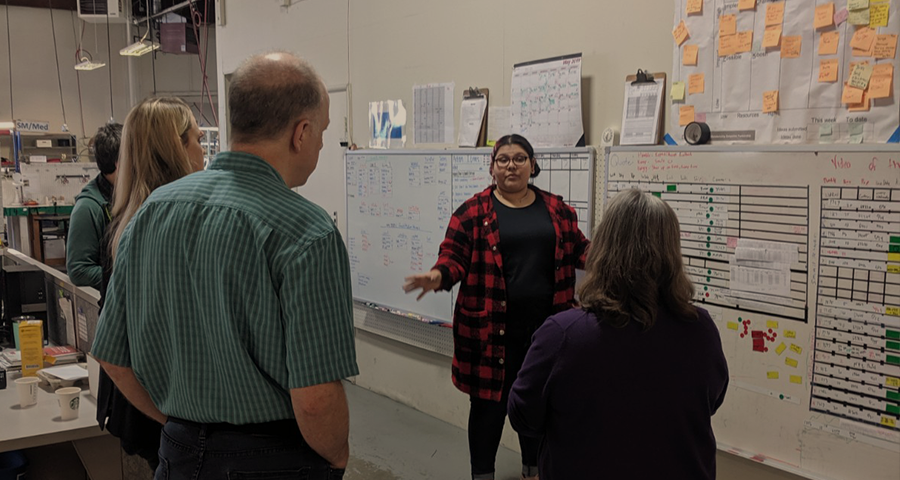Employee Development Doesn’t Have to be Costly
The ability to get the best out of your employees, and unlock their greater potential is sometimes just a matter of opportunity. While many factors can impact your ability to provide training and development in your company, cost doesn’t need to be one of them.
Try these low cost approaches to developing your people.
Identify stretch assignments or projects coming up in the next few months.
Determine who on your team would benefit from serving on a cross-functional improvement team. Give them the opportunity to be a part of that team so they can develop additional skills.
Enable Job Enrichment
Give employees opportunities to present at team meetings about their work –let them share what they are doing on a daily basis to the leadership team. If they are not as extroverted or the idea of presenting is not positive for them, give them opportunities to join improvement, diversity, or project teams with their peers.
During onboarding, pair experienced employees with new employees to make the new employee feel welcome, and give the experienced employee a chance to teach and connect. These activities allow existing employees to benefit from development in their current role, while creating additional career growth.
Teaching
Establish mentoring and coaching opportunities for experienced individuals. Experienced employees can be assigned to act as advisors, coaches, or guides to trainees. Whether you have a formal mentoring program or not, you can start small. Assign an experienced employee to teach a less seasoned employee about one new process or procedure a month. Or, ask the less experienced employee to go give a list to to the seasoned employee of one new task or skill they hope to learn.
Job shadowing can be a great way for your current employees to learn other jobs, while further developing skills within their current roles. Shadowing is also a great way for employees to explore potential internal career opportunities. Give them the chance to try a new skill or position. You could be surprised as natural aptitude lines up. McTavish Company recently experienced success with this, as one of their employees has expressed a desire to grow in her position, and is currently job shadowing and cross training.
Job Rotation
Rotate employees through one or more positions as makes sense for your process cycles. Rotations can last for days, months, or even a year or two. Ask for feedback throughout the rotation – how are employees learning and growing? Do they enjoy the new tasks? Why or why not? Do they have ideas for improvement in mind?
In House Training
By developing training sessions, programs, and workshops that are designed and delivered by your own employees who are experts in the topic, you’re allowing them to grow. Frequently, existing employees who have been with your company for some time are eager to share their hard-earned knowledge with others.
Give them a chance to pass along the information they’ve gleaned to others. Training sessions do not necessarily require large chunks of time or effort. They can be as simple as setting aside an half hour to an hour a day each week to work on a new skill. A.R.E. has experienced success with their career pathways model of in house training.
Continuing Education
Provide books or videos on topics relevant to your workplace. Set up a lending program or create a “library” within your company for employees.
Use staff or team meetings to deliver training to employees. It doesn’t have to be long or complex, a five to fifteen minute training session is all you need. Just make sure to do them on a regular basis and follow up to see how things are progressing. You could also try setting aside one day a week to focus on training for a short period of time.
Leverage Free Web Content. YouTube is a great source of learning content and is free. Try YouTube searches that include Manufacturing, Safety, Lean Manufacturing, Training, Presenting, Leadership, Communication, Teamwork, etc… Another interesting source for learning is Manufacturing Talk Radio.
Companies that reach a great level of success recognize they did this in part because of the efforts and commitments of their employees. Employees who are encouraged by employers to grow and develop are more engaged in company objectives, resulting in better business results. As you can see from the list above, it doesn’t take a lot of money to begin to make a positive impact.
Give some of these strategies a try. Involve your employees in the development process. Just start simply, and informally. Creating an organization that includes learning as part of company culture can start with just one of these development first steps.




